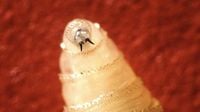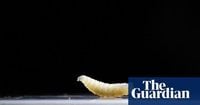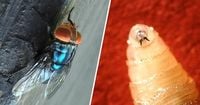The United States has confirmed its first-ever human case of the New World screwworm, a flesh-eating parasite that has long haunted livestock in the Americas but rarely infects people. According to the Department of Health and Human Services (HHS), the case was detected in a Maryland resident who had recently traveled to El Salvador, with confirmation coming from the Centers for Disease Control and Prevention (CDC) and the Maryland Department of Health on August 4, 2025. This marks a significant moment in the ongoing struggle to keep the parasite at bay—especially as outbreaks among livestock have been surging in Central America and Mexico.
The New World screwworm, known scientifically as Cochliomyia hominivorax, is a species of parasitic fly whose larvae—maggots—feed on the living tissue of warm-blooded animals. The parasite got its gruesome name from the screw-like motion the larvae use to burrow into flesh with their sharp mouth hooks, causing severe and sometimes fatal damage to their hosts. While the infection is typically found in cattle, pets, and wildlife, humans can also fall victim—though such cases are rare. The CDC explains, "When NWS fly larvae (maggots) burrow into the flesh of a living animal, they cause serious, often deadly damage to the animal."
Thankfully, the Maryland patient has since recovered, and officials are quick to reassure the public. David McAllister, spokesperson for the Maryland Department of Health, told NPR, "The investigation confirmed there is no indication of transmission to any other individuals or animals." HHS spokesperson Andrew Nixon echoed that sentiment, stating, "The risk to public health in the United States from this introduction is very low." Still, the case is a stark reminder of the parasite's ability to cross borders and the need for vigilance among health care providers, livestock owners, and travelers.
So, what exactly is the New World screwworm, and why is it a cause for such concern? The adult screwworm flies are blue-gray blowflies, visually similar to common black flies. But the females have a sinister distinction: they lay up to 200 eggs at a time in open wounds or natural orifices on animals or humans. Once hatched, the larvae burrow deep, feeding on living tissue and causing wounds to expand rapidly. As Max Scott, a professor of entomology at North Carolina State University, explained to NPR, "Infestation in humans can be quite painful, with high mortality rates if left untreated. Once an infestation starts, that often attracts more flies that lay more eggs. Depending where the wound is, the maggots can make their way into vulnerable tissue like the brain, or the wound can get quite big and then you get sepsis."
Historically, the screwworm was endemic in the U.S., especially in southern states like Texas and Florida, and would sometimes reach as far north as the Dakotas during the summer. But in the mid-20th century, the U.S. Department of Agriculture (USDA) pioneered an innovative solution: the sterile insect technique. This approach involved breeding massive numbers of screwworm flies, sterilizing the males with radiation, and releasing them into the wild. Since female screwworms only mate once, pairing with a sterile male meant no offspring, and over time, the population crashed. According to NPR, this method led to the eradication of screwworm in the U.S. by 1966, with Mexico and Central America following suit in the decades after.
But containment is a never-ending battle. In recent years, outbreaks have surged again in Central America and Mexico. Panama, for example, saw livestock infections jump from 25 cases annually to over 6,500 in 2023, as reported by the USDA. The parasite has since been detected in seven other Central American countries, breaking a barrier that had kept the pest out of North America for decades. Human cases, while still rare, are climbing in some regions. The U.S. Embassy in Nicaragua reported 124 cases in the past year, and Costa Rica confirmed its first human death from screwworm since the 1990s.
This northward creep has put U.S. authorities on high alert. In May 2025, the USDA banned imports of live cattle, horses, and bison from Mexico after a case was found in Veracruz, just 370 miles from the Texas border. The ban has since been lifted and reinstated several times as officials monitor the situation. Agriculture Secretary Brooke Rollins cited "the continued and rapid northward spread of New World Screwworm (NWS) in Mexico" as the reason for the cautious approach.
Recognizing the stakes for American agriculture, the USDA rolled out a five-part plan to combat the threat. This includes constructing a new sterile fly production facility in Edinburg, Texas, which is expected to produce up to 300 million sterile flies per week once operational. The plan also involves hiring more mounted patrol officers—known as "Tick Riders"—to monitor wildlife crossings along the border, training detector dogs to sniff out infested livestock at ports of entry, and investing $100 million in new technologies to fight the parasite. According to the USDA, the sterile fly technique remains the cornerstone of eradication efforts, as it did in the 1960s and during a small outbreak in the Florida Keys in 2017.
The economic risks are enormous. Texas Governor Greg Abbott warned that the screwworm threatens the state’s $867 billion agriculture industry and 2 million jobs. A USDA report estimated that an outbreak could cost Texas at least $1.8 billion due to livestock losses, labor, and medication. Agricultural groups, too, have voiced their concerns. Zippy Duvall, president of the American Farm Bureau Federation, said, "It took decades to eradicate this parasite from within and adjacent to our borders more than a generation ago, and this is a proactive first step."
For now, officials stress that the risk to the general public remains low. The CDC advises that those most at risk are people traveling to outbreak areas, spending time around livestock, sleeping outdoors, or having open wounds. There is currently no medication to treat New World screwworm myiasis in humans, making prevention and early detection all the more critical.
While the Maryland case appears to be an isolated incident, it’s a vivid reminder of nature’s ability to surprise even the best-prepared nations. As the U.S. steps up its defenses and researchers race to contain the parasite’s advance, the story of the New World screwworm is far from over—and for ranchers, veterinarians, and public health officials, vigilance is now the watchword.


